
How to divide perennials
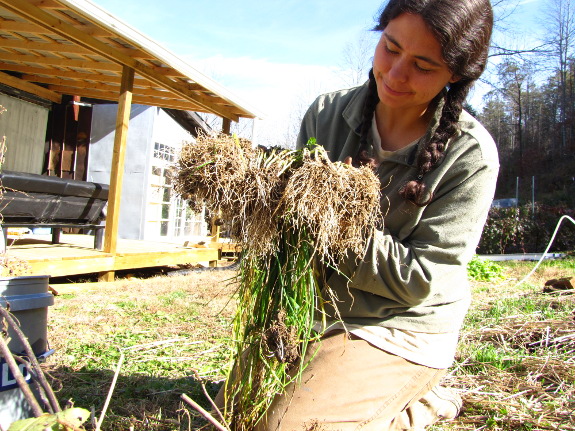
I can't quite explain
why I love plants so much, but part of it is pure skinflintery.
You can start with one plant, then a couple of years later, you have a
dozen.
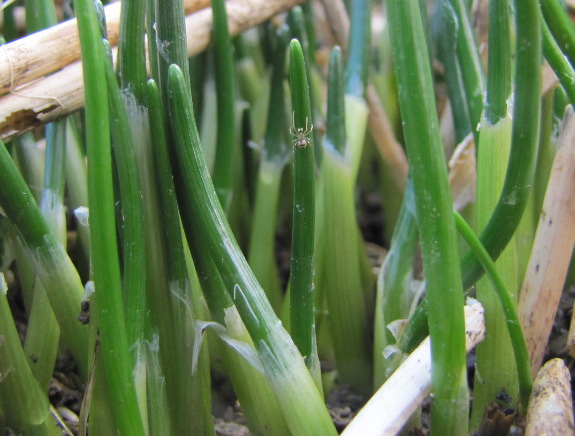 With herbaceous (nonwoody)
perennials, the easiest way to replicate your plant is often simple
division --- dig up the roots, break (or cut) the clump in half, and
you have two plants for the price of one. Not all perennials
respond well to division, but many do.
With herbaceous (nonwoody)
perennials, the easiest way to replicate your plant is often simple
division --- dig up the roots, break (or cut) the clump in half, and
you have two plants for the price of one. Not all perennials
respond well to division, but many do.
The photo at the top of
this post shows the several large clumps of chives I ended up with for
the price of one seed. Yep, that's right --- I planted a single
chive seed in this spot in 2008, it grew and thrived, and now I've got
a heaping handful. If I really wanted to, I could tease apart
each bulb and probably have a hundred or more chives, but I don't need
that many, so I'll just plant them back by the hunk.
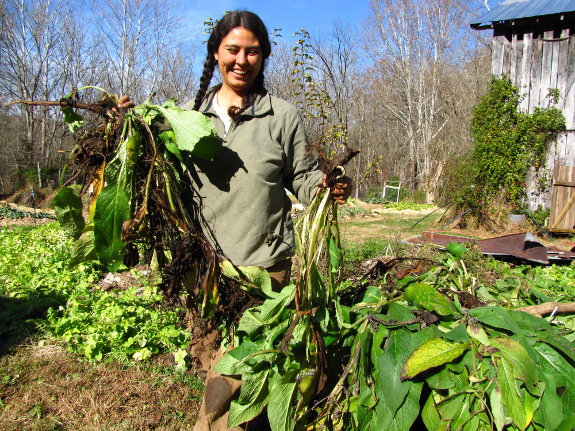
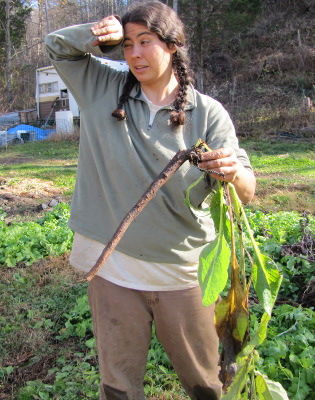 Of
course, the king of division is comfrey. I'm guessing our plants
are Russian
comfrey since they
don't produce seeds, but they sure do divide easily. In fact, you
can't get rid of a clump once you've started it somewhere.
Of
course, the king of division is comfrey. I'm guessing our plants
are Russian
comfrey since they
don't produce seeds, but they sure do divide easily. In fact, you
can't get rid of a clump once you've started it somewhere.
The photo to the left
illustrates two important points. The first is how I scrunch up
my face when I think about trying to eradicate comfrey from a spot
where it's become established. More seriously, I wanted to show
how pieces of comfrey that seem to lack root hairs will still grow and
thrive. You can hack a clump of comfrey to within an inch of its
life and every little root bit will spring to life. This long
root will thrive, but I wouldn't expect the same from most other
species.
Monday, I dug up what
used to be four plants in 2008 (a quarter of what was once three plants
in 2006). I filled an entire wheelbarrow, and I'm confident there
will be enough pieces of root left behind to refill the old spot in the
spring.
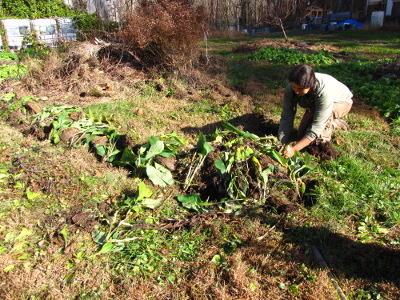 Meanwhile, the comfrey pieces
I pried out of the soil formed a border for a new part of the forest
garden I want to begin reclaiming from the "lawn" in 2013. (You
can read
my plans here.)
I've got at least as many plants left to go elsewhere --- maybe to hold
soil in the powerline pasture if we get around to playing with it this
winter.
Meanwhile, the comfrey pieces
I pried out of the soil formed a border for a new part of the forest
garden I want to begin reclaiming from the "lawn" in 2013. (You
can read
my plans here.)
I've got at least as many plants left to go elsewhere --- maybe to hold
soil in the powerline pasture if we get around to playing with it this
winter.
Now's the perfect time
to divide most perennial herbs. Go forth and multiply!
Want more in-depth information? Browse through our books.
Or explore more posts by date or by subject.
About us: Anna Hess and Mark Hamilton spent over a decade living self-sufficiently in the mountains of Virginia before moving north to start over from scratch in the foothills of Ohio. They've experimented with permaculture, no-till gardening, trailersteading, home-based microbusinesses and much more, writing about their adventures in both blogs and books.
Want to be notified when new comments are posted on this page? Click on the RSS button after you add a comment to subscribe to the comment feed, or simply check the box beside "email replies to me" while writing your comment.
- Remove comment
